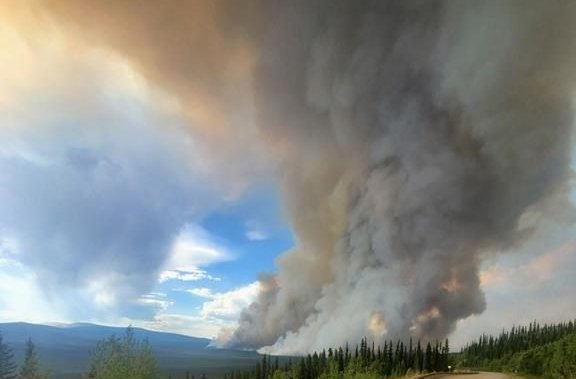As the unseasonable heat wave grips northern Canada, approximately 200 homes near Whitehorse now sit under evacuation alert. This early wildfire season has caught many Yukoners off guard, with temperatures climbing well above historical averages for late May.
“We’ve never seen fire behavior this aggressive this early in the season,” says Mark Phillips, Yukon’s wildfire management coordinator. “The combination of high temperatures, low humidity, and gusting winds has created the perfect storm for fire spread.”
The evacuation alert affects properties primarily in the Takhini River Valley area, about 30 kilometers northwest of Whitehorse. Residents there have been told to prepare essential documents, medications, and evacuation plans should the order to leave come suddenly.
Sarah McLeod, who has lived in the valley for over two decades, packed her family’s emergency bags yesterday. “The sky was clear blue just three days ago. Now it’s all haze and smoke,” she told me while loading her SUV with photo albums and important papers. “I’ve never had to prepare like this in May.”
The territory’s wildfire service has reported the blaze has grown to over 3,000 hectares since it was first spotted last week. Officials believe lightning strikes during a dry thunderstorm sparked the initial flames, which found ample fuel in forests that haven’t seen significant rainfall in weeks.
Climate scientists have pointed to this situation as consistent with warming trends across Canada’s North. Dr. Elise Thompson from the Northern Climate Research Institute notes that Yukon has seen a 2.3°C temperature increase since the 1950s, significantly higher than the global average.
“What we’re seeing isn’t just a bad year – it’s part of a disturbing pattern,” Thompson explains. “Fire seasons are starting earlier, lasting longer, and burning more intensely across the North.”
The territorial government has activated its emergency operations center, with Premier Ranj Pillai visiting affected communities yesterday. “We’ve deployed all available resources, including requesting additional air support from British Columbia and Alberta,” Pillai stated during a press briefing in Whitehorse.
Four air tankers and six helicopters are currently working to contain the fire’s growth, while more than 50 firefighters are attempting to establish control lines. The challenge, according to frontline responders, is the unusually dry forest floor and strong winds that keep changing direction.
For Indigenous communities in the region, these fires threaten more than just property. Joseph Caesar, an elder from the Ta’an Kwäch’än Council, expressed concern about traditional territories and cultural sites. “This land holds our stories and medicine places. When it burns, we lose more than trees.”
The Yukon government has established a temporary shelter at the Canada Games Centre in Whitehorse for those who’ve chosen to leave voluntarily. About 40 residents, mostly elders and families with young children, have already relocated there.
Federal assistance has been promised, with Emergency Preparedness Minister Harjit Sajjan confirming that military assets could be deployed if requested by territorial authorities. “We stand ready to provide whatever support is needed,” Sajjan said during a call with territorial officials yesterday.
For Whitehorse residents not under evacuation alert, the impacts are still evident. Air quality warnings have been issued, with particulate matter readings four times higher than normal health thresholds. Schools have canceled outdoor activities, and health officials are advising sensitive groups to remain indoors.
Local business owner Miguel Torres has already seen cancellations for his wilderness tour company. “May and June are usually our ramp-up months for the summer season. These fires are hitting at exactly the wrong time for tourism operators who are still recovering from pandemic losses.”
The current forecast offers little relief, with Environment Canada predicting continued above-average temperatures and minimal precipitation for at least the next week. Fire officials say containment efforts will likely continue well into June.
This early-season wildfire emergency follows a record-breaking 2023, where Yukon experienced its largest area burned in decades. According to territorial data, over 600,000 hectares of land were affected by wildfires last year, costing more than $25 million in suppression efforts.
As the situation develops, emergency officials urge all Yukoners to register for territorial alert systems and to prepare their own evacuation plans. “Even if you’re not currently in an alert area, this fire season is proving unpredictable,” warns Samantha Baker, Yukon’s emergency measures coordinator. “Preparation can make all the difference.”
For now, residents like McLeod watch the horizon with concern. “You can see the glow at night,” she says. “It reminds you how quickly things can change in the North, and how small we are compared to nature’s forces.”






